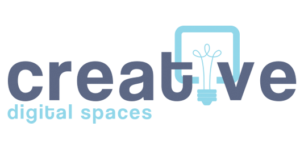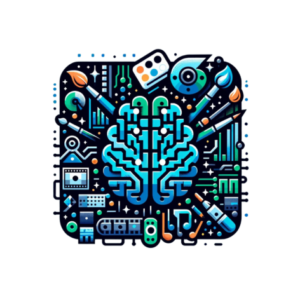
How to set it up?
Exploring new AI tools like OpenAI, along with a variety of avatar creators, offers an engaging and fun experience for online groups. These digital tools enable participants to connect and share their experiences creatively. When planning such an activity, there are several key factors to consider:
Essential Equipment: To participate, each person will need a computer or smartphone with internet access and an account set up. In cases where a paid version of a tool is required, it’s sufficient if you have access and generate content for the rest of the group.
Introduction to Digital Art: A brief presentation on iconic digital art pieces and their impact on the digital world can be a great starting point. This could include:
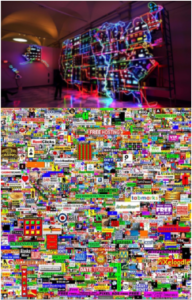 The First Picture of the Whole Earth by Ken Knowlton and Leon Harmon (1966), a pioneering digital mosaic of Earth from space.
The First Picture of the Whole Earth by Ken Knowlton and Leon Harmon (1966), a pioneering digital mosaic of Earth from space.
Nam June Paik’s The Electronic Superhighway (1995) is an early internet-based art installation.
Lillian Schwartz’s Forms in Space by Light (in Time) (1972) is a groundbreaking film using computer-generated imagery.
Peter Blume’s The Garden of Earthly Delights (1990) is an interactive digital art piece combining CGI and traditional animation.
John Whitney Sr.’s reinterpretation of The Starry Night (1991) blends digital and traditional art techniques.
The Million Dollar Homepage by Alex Tew is a unique crowdsourced digital art project.
How to use it in practice?
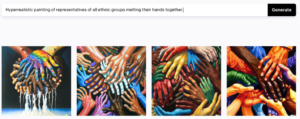 Goals for the activity: The activity begins with participants exploring the unique characteristics and aspirations of their local area, fostering a sense of community awareness and appreciation. Then, leveraging AI tools like MidJourney or DALL·E, participants translate these community insights into visual representations. This process involves creatively converting abstract concepts such as teamwork, cultural richness, and helping others into tangible digital artworks.
Goals for the activity: The activity begins with participants exploring the unique characteristics and aspirations of their local area, fostering a sense of community awareness and appreciation. Then, leveraging AI tools like MidJourney or DALL·E, participants translate these community insights into visual representations. This process involves creatively converting abstract concepts such as teamwork, cultural richness, and helping others into tangible digital artworks.
Through this activity, participants learn to use AI as a medium to express and reflect the diversity and inclusivity of their community. They are encouraged to create images showing people from varied backgrounds and cultures in settings that depict equality and harmony. This visual portrayal can also highlight the community’s strengths and resources, offering a digital mirror to the real-world environment
The Evolution of OpenAI’s Tools: OpenAI first came into the limelight with DALL·E, followed by ChatGPT. While initially popular for creative explorations like poetry and songwriting, there’s been a recent trend towards using ChatGPT for practical tasks such as design, programming, and text refinement. This shift, partly due to the limitations in ChatGPT’s creative capabilities, doesn’t diminish its value for creative experimentation. Engaging with ChatGPT in creative “interactions” can be a way to express deep imaginative concepts, making the creative process less daunting.
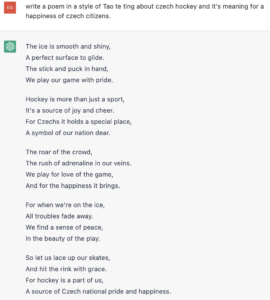
What are good practice examples?
The integration of artificial intelligence (AI) in creative fields is a significant milestone in the evolution of art, music, and literature. AI tools offer innovative ways for creators to express themselves and engage in interactive learning. Below you can find an overview of several prominent AI tools and ideas for group activities that leverage their capabilities.
1.) ChatGPT by OpenAI
ChatGPT is a sophisticated language processing AI that excels at generating human-like text for various applications, including translation, question answering, and content creation.
Group Activity Ideas with ChatGPT:
Critical Thinking Prompts: Encourage brainstorming and problem-solving with open-ended questions.
Role-Playing Scenarios: Use ChatGPT for interactive role-play, enhancing communication and problem-solving skills.
Collaborative Storytelling: Participants can build stories together, guided by ChatGPT’s creative responses.
2.) DeepDream
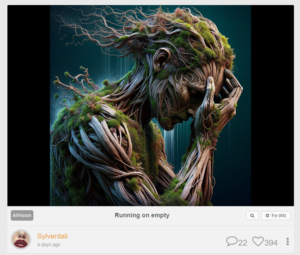 DeepDream transforms images into surreal, dream-like visuals using a neural network, offering a unique approach to digital art.
DeepDream transforms images into surreal, dream-like visuals using a neural network, offering a unique approach to digital art.
Group Activity Ideas with DeepDream:
Surreal Art Creation: Modify participant-created images for unexpected artistic results.
Collaborative Art Projects: Develop a collective artwork using DeepDream for creative alterations.
Visual Story Interpretation: Create representations of scenes or characters from literature using DeepDream.
3.) AIVA (Artificial Intelligence Virtual Artist)
AIVA composes original music using machine learning, suitable for various musical styles.
4.) MuseNet by OpenAI
MuseNet is an AI music synthesizer that can generate original compositions across different styles and instruments.
Integrating AIVA with MuseNet for a group activity can provide a comprehensive and creative experience in AI-assisted music composition. Here are some ideas:
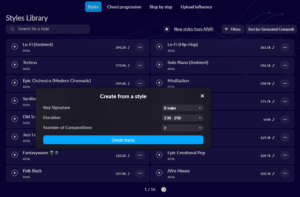 Music Composition Challenge:
Music Composition Challenge:
Participants use AIVA to create original compositions. They can experiment with different styles and genres.
After initial compositions, introduce MuseNet to add variations or expand the pieces, exploring how different AI tools can complement each other.
This activity encourages an understanding of how AI interprets musical styles and composition techniques.
5.) AI Dungeon
AI Dungeon is an AI-powered text adventure game that crafts unique, dynamic story experiences based on user input, perfect for narrative exploration.
AI Dungeon Group Storytelling Workshop:
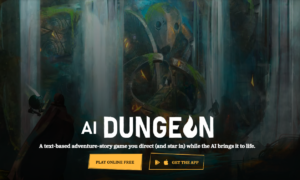 Introduction to AI Dungeon: Begin with a brief overview of AI Dungeon, explaining how it uses AI to generate dynamic story experiences based on user input.
Introduction to AI Dungeon: Begin with a brief overview of AI Dungeon, explaining how it uses AI to generate dynamic story experiences based on user input.
Form Small Groups: Divide participants into small groups. Each group will work together to create a story using AI Dungeon.
Setting the Scene: Each group starts by deciding on a genre or theme for their story. Encourage them to think creatively – whether it’s a space adventure, fantasy quest, or a mystery thriller.
Collaborative Storytelling: Groups take turns inputting prompts into AI Dungeon. The AI generates the next part of the story based on these prompts. Each member contributes, ensuring a collaborative and inclusive storytelling process.
Narrative Challenges: Introduce specific challenges or twists for the groups to incorporate, such as adding a new character, facing an unexpected obstacle, or shifting the story’s tone. This encourages adaptability and creativity.
Reflection and Discussion: After completing their stories, each group shares their experience. Discuss how AI influenced their narrative decisions and the differences between this and traditional storytelling.
Creative Writing Skills: Use this opportunity to discuss elements of storytelling, like character development, plot structure, and world-building, highlighting how AI Dungeon can be a tool for understanding and practicing these concepts.
6.) Poem Portraits
This tool generates unique poetry based on input images, blending visual and literary art.
Group Activity Idea with Poem Portraits:
Personalized Poetry Creation: Combine self-portraits with contributed words to create individual poem portraits, forming a collective poem.
7.) MidJourney / Leonardo AI
MidJourney/LeonardoAI is an advanced AI for generating high-quality images from text prompts, suitable for visual creativity.
Group Activity Idea with MidJourney/Leonardo:
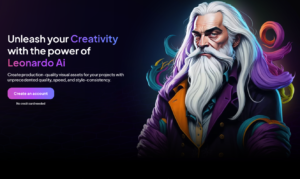 Create a storytelling activity where groups use MidJourney/Leonardo to generate a series of images based on a narrative they develop. Each group can create a storyboard using these images, crafting a story around them or using them as inspiration for different parts of their narrative. This activity not only fosters creativity in storytelling but also explores how visual aids can influence and enhance narrative development.
Create a storytelling activity where groups use MidJourney/Leonardo to generate a series of images based on a narrative they develop. Each group can create a storyboard using these images, crafting a story around them or using them as inspiration for different parts of their narrative. This activity not only fosters creativity in storytelling but also explores how visual aids can influence and enhance narrative development.
In addition to these, there are numerous other AI tools available that cater to various creative needs, from automatic painting generators to poetry and music creation platforms. The use of these AI tools in group activities not only promotes creativity but also helps in understanding AI’s role in modern art and its potential to enhance human expression. These activities are designed to be accessible, encouraging participation from individuals with varying levels of artistic experience.
